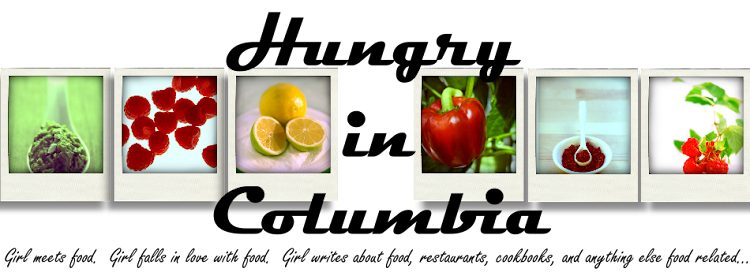After spending close to six or seven hours making lasagna, we were ready to eat it. The table was set, food was on the plates and we were hungry. I cut a piece with my fork excited to finally taste what Jim and I had worked so hard on.
Then it dawned on me. We didn't put the ricotta in the lasagna. Three full tubs of ricotta were sitting our refrigerator, completely unopened, because we forgot it. It seems simple enough, right? Open the tub, spoon some on each layer and you're good. That's why we forgot it.
Let me start at the beginning. Our goal was to make homemade lasagna. All of it homemade--the sauce, the pasta, fresh mozzarella and parmesan cheese. The only thing that didn't require some form of work? You guessed it. The ricotta. And that's why it's STILL sitting in my fridge and not layered in my beautiful lasagna.
Good news? The lasagna still tastes amazing. The fresh mozzarella was definitely worth it, the sauce made my apartment smell like heaven for a day and a half AND tasted delicious and making the pasta was quite an experience.
If you're in the mood for a cooking endeavor that takes some time, try making homemade lasagna. You know you'll love it and it tastes so much better after you spend all of that time on it.
Just don't forget the ricotta.
Bolognese Sauce
2 1/2 lbs. ground sirloin/beef
1 large carrot, finely chopped
2-3 cloves garlic, finely chopped
1/2 large onion, finely chopped
4/2 14.5 oz. cans of peeled, seeded, and diced tomatoes, drained
1 1/4 c. full-bodied red wine
1/4 c. red wine vinegar
5 sprigs thyme
4 sage leaves
3 bay leaves
4-5 leaves basil
Begin by cooking the beef over medium high heat in a large pot or stock pot. Because there's a lot, you'll probably want to cook it in batches. Remove the meat once cooked and keep in a separate container.
When meat is cooked, start cooking the vegetables in the same pot. You can keep some of the fat from the meat or use olive oil instead to sweat the vegetables, which will take about 10 minutes. Add 1/4 c. of the red wine to the pot and deglaze the pan (scrape up all of the little bits of meat and veggies that are stuck to the pot).
Return the meat to the pot after deglazing. Add the rest of the wine (1 cup) and red wine vinegar. Add the tomatoes. Stir everything together. It will look very thick and like it isn't a sauce at all. Don't worry, though. The juices from the tomatoes will come out when it starts to cook.
Wrap the thyme, sage and bay leaves in the basil leaves. This is called a bouqet garni. Tie it together with kitchen twine or dental floss. Drop this into the pot.
Let sauce simmer, uncovered, for 3 hours. Ideally, refrigerate it overnight. If you do this, reheat it for 30 minutes before using in lasagna.
Homemade Pasta
5-6 eggs
4 c. flour
2 T olive oil
Pasta Machine
Form flour into a ring with a well in the center. Crack 5 eggs into the well and add olive oil.
Stir eggs around with fingers, breaking up the eggs and destroying the wall of flour. Drag more flour from the walls into the eggs.
Continue to pull flour from the walls until dough forms.
Use a sharp edge like the back of a knife to pull up the dough and work it together. If there is still loose flour, add one more egg YOLK and then the white if the dough is still too dry.
Work into a ball. (I ended up using 6 eggs total, but the dough ended up too sticky. Next time I'll use 5.)
Divide the dough into fourths. Set the rollers at the widest setting on the pasta machine. Work a portion through the rollers. Fold the dough over in half and work through the machine again. Fold and roll through again. Continue to do this until the dough feels smooth, like suede or leather.
Adjust the knob to the next smallest setting and pass the dough through. Continue to roll the dough through the machine, decreasing the width on the rollers each time. If it gets to be too long, cut in half. Place finished layers of pasta on wax paper to prevent from sticking.
To cook the pasta, bring a large pot of water to boil. Add salt and some olive oil to prevent from sticking. Place pasta in water. We boiled 1-2 strips at a time to make it less stressful. After 30 seconds, check the pasta. It should be al dente with a bit of a bite to it still.
Hint: We made this whole recipe, and didn't need all of it. For the lasagna, you'll need two strips per layer of lasagna. In the end, we used about 6-8 strips of lasagna pasta. You can store the pasta in the refrigerator for a couple days, or you can dry the pasta for a later date. Or you can just cut this recipe in half.
Lasagna
Cooked lasagna strips
3-15 oz. containers of ricotta cheese
1 1/2 lbs of fresh mozzarella, sliced
Quick Tip: Put the mozzarella in the freezer 15-20 minutes before you want to slice it. It helps firm the cheese and makes it much easier to cut it.
Bolognese sauce
1 lb Parmesan cheese, finely grated
Grease a 10 x 14 baking dish. Place 2-3 strips of the pasta in the bottom of the pan. Layer the first noodles with one third of each of the ricotta, mozzarella, sauce and parmesan cheese. Repeat for second and third layers.
Finish the lasagna with a layer of sauce, mozzarella and parmesan. Bake at 350 degrees for 1 hour and 15 minutes. Let it cool for 10-15 minutes.

























